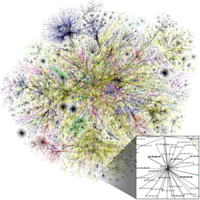
Photo from wikipedia
Objectives To examine the prevalence and the associated factors of burnout among both healthcare workers (HCWs) and the general working population, which has not yet been unknown, using large-scale, nationwide… Click to show full abstract
Objectives To examine the prevalence and the associated factors of burnout among both healthcare workers (HCWs) and the general working population, which has not yet been unknown, using large-scale, nationwide data. Design Cross-sectional internet-based study. Setting Nationwide internet survey conducted between 8 and 26 February 2021 in Japan. Participants Workers aged 20–64 years. We classified the workers as HCWs and the general working population. Exposures Demographic characteristics (age, sex and marital status), socioeconomic status (education, employment and income), health-related, work-related and industry-related factors (smoking, alcohol use, physical and psychiatric comorbidities, working hours, types of healthcare professionals, experience on the COVID-19 frontline and working industries). Main outcome measures Burnout defined as a score of ≥3 points on the Mini-Z Single-Item Burnout Scale. Results Of the included 12 650 workers, 1087 were HCWs. After inverse probability weighting on data from the 2016 Comprehensive Survey of Living Conditions, burnout in HCWs and the general working population was 33.5% (95% CI 29.2% to 38.0%) and 31.0% (95% CI 29.7% to 32.4%), respectively. In the weighted multivariable modified Poisson regression models, working 60 hours or more was associated with burnout in all workers (HCWs: prevalence ratio (PR) 2.52, 95% CI 1.68 to 3.76; general population: PR 1.26, 95% CI 1.07 to 1.48). Widowed/separated compared with married was associated with burnout only among HCWs (PR 1.69, 95% CI 1.16 to 2.47), whereas presence of physical or psychiatric comorbidities was associated with burnout among the general working population (PR 1.14, 95% CI 1.03 to 1.28; and PR 1.65, 95% CI 1.45 to 1.87, respectively). Conclusions Burnout was prevalent in both HCWs and the general working population in Japan. Both common and specific risk factors were observed. Our findings highlight the need for the general workplace policy and targeted interventions for burnout prevention.
Journal Title: BMJ Open
Year Published: 2022
Link to full text (if available)
Share on Social Media: Sign Up to like & get
recommendations!